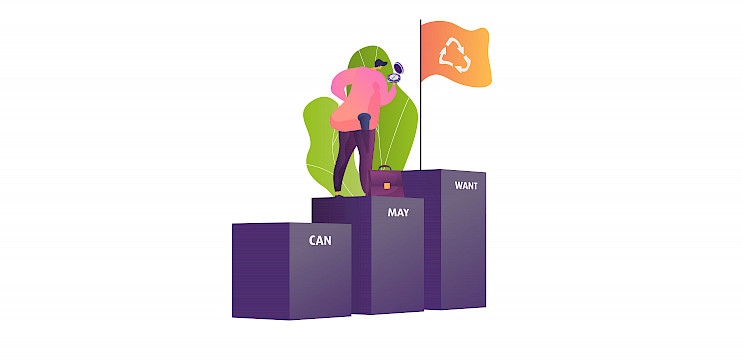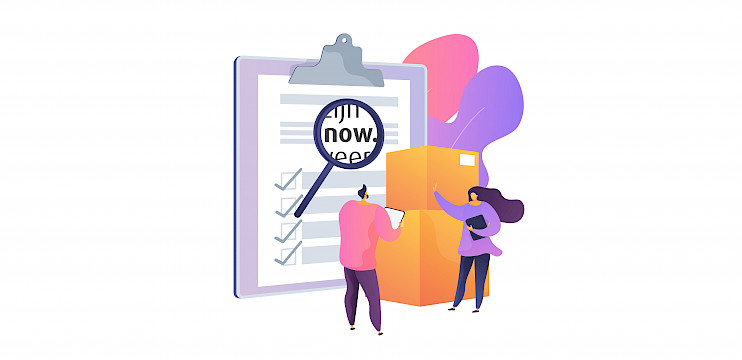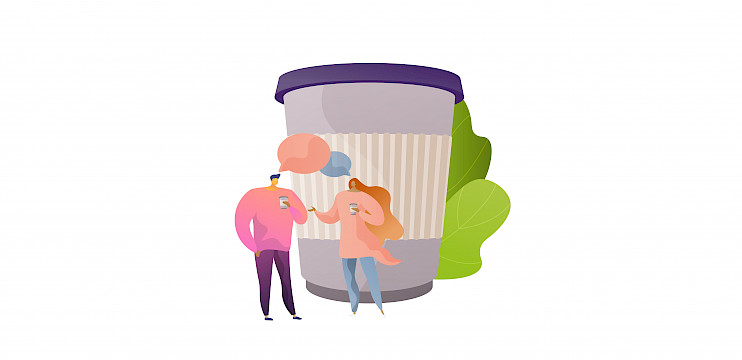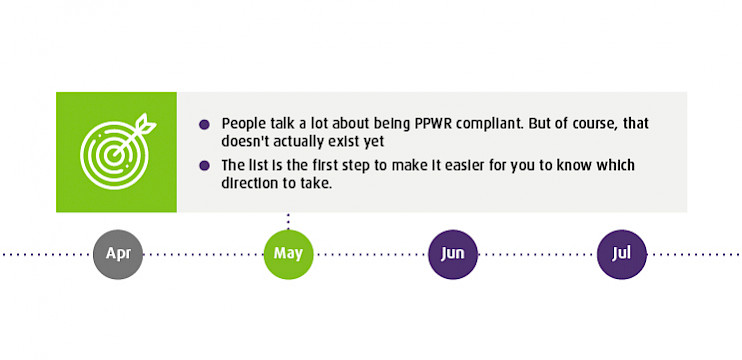How can we help?
Our experts are there for you.
After introducing the three pillars needed for a circular flow – What is possible? What is allowed? And what are we willing to do? – and last month’s deep dive into what is possible, it’s now time to put what is allowed under the microscope. It’s a topic that often stirs up debate. Understandably so, and we’re here to explain why that is and how things currently stand.

PPWR compliant? Not a thing yet
There’s a lot of talk about the PPWR, and even about being ‘PPWR compliant’. But here’s the thing: that doesn’t exist yet. The PPWR will only take full effect as of January 1, 2030. Until then, individual articles will be phased in gradually. For example, the first of these will come into force on August 12, 2028, requiring compostable labels on fruits and vegetables.
What is allowed… and when exactly?
When we talk about what is allowed, we need to be clear about the moment in time we’re referring to. If we’re talking about now, we’re referring to national regulations that are already in place or publicly available. Think of:
• the KIDV’s recycle checks;
• the rules surrounding the waste management contribution paid via Verpact;
• the recently introduced tariff differentiation 2.0.
If we’re talking about the PPWR, then we’re referring to future moments — and the tools listed above may have changed or even disappeared by then. Mixing these elements up only adds complexity to an already complex situation.

The Netherlands leading by example
One positive note about the current legislation — and something the Netherlands really excels at — is that it anticipates what’s likely to come in the near future. So if you’re following KIDV’s guidelines and aligning your developments with the direction this group of experts is taking, you’re probably already moving in line with what the PPWR will eventually require. And that’s good news for those serious about contributing to the transition.
Technically possible, but legally permitted?
That said, many uncertainties remain. Think of things that might be technically possible — which we discussed last month — but are not yet supported by legislation. Take compostable coffee cups, for example. They can be made and could enter the market. But we need to know whether they count as recyclable packaging. Because while a compostable package sounds great, it’s not recycling in the sense that the material is recovered and reused as packaging again. And that’s the kind of thing you want to know as a manufacturer before making the switch!
The cardboard cup dilemma
Or consider the debate about so-called ‘cardboard’ cups. Are they allowed or not? The truth is, they have a thin plastic lining, otherwise your drink would just leak through. Under the PPWR, there are certain allowances (>5% non-primary material and one-sided lamination), but the SUP (Single Use Plastics) directive from 2021 sees it differently.
One camp says the cups are recyclable, the other says it’s nearly impossible. The first refers to technical capability (what is possible), the second to practical reality (what are we willing to do). And that makes it tough to create rules that reflect both.

Why clarity is so important
So what is possible and what is allowed don’t always align — and that can be for many reasons. It’s completely understandable that many companies we speak to feel overwhelmed. What’s allowed, and what isn’t? Add to that the flood of (often self-serving) information in the public debate, and the fact that rules still vary per country until the PPWR kicks in, and it’s clear why the whole issue feels so complex.
Knowing what’s truly possible and what’s really allowed — knowing what you can do now, and what you’ll probably need to do later — is crucial for making the right decisions today.

That’s why PackSense was founded
That’s why Optimum Group established the independent organization PackSense — to support companies that are willing to move forward, but unsure how. Because if you don’t know what to do, you risk falling into passivity — and that definitely won’t get us any closer to a circular economy.
Get in touch – we’re here to help
Check the list — and if you have any questions, we’re happy to help! And if your packaging is made of another main material or a different combination, feel free to reach out to the new branch of Optimum Group created especially for this purpose: PackSense. The experts there will help you figure out what is possible and what is allowed.
Our experts are there for you.